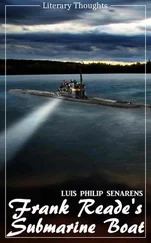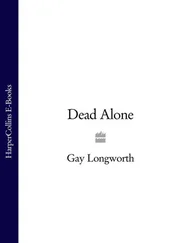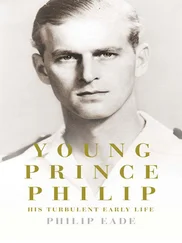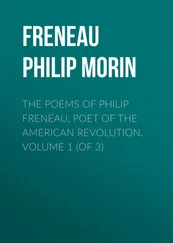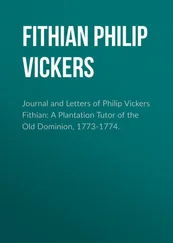12. K. Serbina, ed., Kniga bol’shemu chertezha (Moscow and Leningrad, 1950).
13. Petition from servicemen at Fort Verkholensk to Tsar Michael, in J. Forsyth, A History of the Peoples of Siberia: Russia’s North Asian Colony 1581-1990 (Cambridge, 1992), pp. 87-8.
14. Forsyth in A. Wood, ed., The History of Siberia: From Russian Conquest to Revolution (London, 1991), Table 5-1, p. 71. For more on the native peoples of Siberia see Christian, Russia, Central Asia and Mongolia, vol. 1, pp. 54-7, Forsyth, A History of the Peoples of Siberia, and T Armstrong, Russian Settlement in the North 1581-1990 (Cambridge, 1992).
15. Instruction to the governor of Iakutsk, 10 February 1644, Vernadsky et al., Source Book, vol. 1, pp. 266-7. The same principle informs similar orders dating back at least twenty years.
16. [Olearius], The Voiages and Travels of the Ambassadors sent by Frederick, Duke of Holstein, to the Great Duke of Muscovy and the King of Persia (2nd edn, London, 1669), pp. 117, 136.
17. On units of ‘new formation’, see J. Keep, Soldiers of the Tsar: Army and Society in Russia 1462-1874 (Oxford, 1985), pp. 80-1.
18. Uchenie i khitrost’ ratnago stroieniia pekhotnykh liudei [Kriegskunst der Fuss] (Moscow [State Printing Court], 1647). Over 1,000 copies of the book were printed; fewer than 200 were sold. However, its influence would have been greater than the number suggests in an age when copyists’ services were cheap.
19. P. Gordon, Dnevnik 1659-1667, ed. D. Fedosov (Moscow, 2002), p. 100.
20. Longworth, Alexis, pp. 144, 266 (n. 26), 267 (n. 61).
21. Tula: materialy dlia istorii goroda xvi—xviii stoletii (Moscow 1884), pp. 2—29.
22. Longworth, Alexis, pp. 260-61, n. 42.
23. For the Ukrainian background, see S. Lep’iavko, Kozats’ki viini kintsya xvi st. v Ukraini (Chernihiv, 1996).
24. P. Longworth, The Cossacks (London, 1969), ch. 4.
25. Vernadsky et al., Source Book, vol. 1, p. 296.
26. Ibid., pp. 300-301. Recent publications by some Ukrainian historians repeat the claim that Pereiaslav was a treaty rather than a submission.
27. Longworth, Alexis, p. 96.
28. On Cossack democracy etc. see Longworth, The Cossacks, ch. 1. On Khmelnytsky and his successors, ibid., ch. 4.
29. Vernadsky et al., Source Book, vol. 1, pp. 202-4.
30. W. E. D. Allen, The Ukraine: A History (Cambridge, 1940), pp. 152-58; also Frost, The Northern Wars, pp. 186—8.
31. See Longworth, Alexis, ch. 7, especially the Tsar’s letter to his chief negotiator at Andrusovo, p. 176.
32. Nolde, La Formation de l’Empire Russe, vol. 1, pp. 194—5.
33. On the advent of the Kalmyks, see Khodarkovsky, Russia’s Steppe Frontier, pp. 133-5-
34. On Poland’s foreign service in the critical period of the late seventeenth century, see A. Kaminsky, Republic vs. Autocracy: Poland-Lithuania and Russia 1686—1697 (Cambridge, Mass., 1994), which demonstrates the amateurishness of Polish diplomacy by contrast to Russia’s. See also my review in American Historical Review, December 1995, pp. 1622—3.
35. I. Kozlovskii, Pervye pochty i pervye pochtmeistery v Moskovskom gosudarstve, vol. 1 (Warsaw, 1913), pp. 86-7.
36. See L. Hughes, Sophia, Regent of Russia 1657-1704 (New Haven, 1990), pp. 43-5 and generally on the period 1676-89.
37. Khodarkovsky, Russia’s Steppe Frontier, p. 71.
38. Veselovskii, D’iaki i pod’iachie xv—xvii vv, pp. 203, 45—6, 531—2. See also Chistiakova, Rogozhin et al., (Oko vsei velikoi Rossii’ on Ivanov (pp. 92-108) and pp. 108ff. on Matveyev and Golitsyn.
8: PETER THE GREAT AND THE BREAKTHROUGH TO THE WEST
1. Vernadsky et al., Source Book, vol. 2, p. 343 (with adaptation).
2. On the first campaign of the Swedish war, see Frost, The Northern Wars, pp. 229ff.; D. Kirby, Northern Europe in the Early Modern Period: The Baltic World, 1492-1772 (London, 1990), pp. 299ff.
3. For the early, as well as the later, history of St Petersburg, see J. Bater, St Petersburg: Industrialization and Change (London, 1976).
4. G. Adlerfelt, The Military History of Charles XII (3 vols., London, 1740), vol. 3, pp. 197, 235.
5. Kirby, Northern Europe in the Early Modern Period, p. 325. The terms were interesting in that, in trying to prevent Russia interfering in Swedish affairs, the treaty also insisted that Russia prevent any change to Sweden’s 1720 constitution or the succession to the throne, which gave Russia a legal reason to interfere.
6. N. N. Molchaninov, Diplomatiia Petra Velikogo (Moscow, 1986).
7. E. Schuyler, Peter the Great (2 vols., London, 1884), vol. 2, p. 478.
8. Ibid., pp. 238-39 (revised).
9. On the Khiva expedition, see T. Barrett, At the Edge of Empire: The Terek Cossacks and the North Caucasus Frontier 1700-1860 (Boulder, 1999), p. 31; on Peter’s strategy in Central Asia, A. Donnelly, The Russian Conquest of Bashkiriya 1552—1840 (New Haven, 1968), ch. 4 and its references.
10. Khodarkovsky, Russia’s Steppe Frontier, p. 7.
11. M. Olcott, The Kazakhs (Stanford, 1995), p. 30.
12. J. Bell (of Antermony), Travels from St Petersburgh in Russia to Diverse Parts of Asia (2nd edn, London, 1764), vol. 1, pp. 132—316, and vol. 2, pp. 1—155.
13. Coxe, Russian Discoveries, pp. 442-45; for an account of the China negotiations see the account by de Lange, the embassy’s secretary, in Bell, Travels from St Petersburgh, vol. 2, pp. 166ff.
14. Schuyler, Peter the Great, vol. 2, p. 593.
15. Khodarkovsky, Russia’s Steppe Frontier, pp. 159, 161-2.
16. Vernadsky et al., Source Book, vol. 2, p. 345.
17. S. Krashennikov, The History of Kamschatka and the Kurilski Islands (Glocester [sic], 1764), pp. 224, 172, 176, 202, 224; Forsyth, A History of the Peoples of Siberia, p. 101.
18. Forsyth, A History of the Peoples of Siberia, pp. 137, 139.
19. Coxe, Russian Discoveries, p. 22.
20. R. Fisher, ed., The Voyage of Semen Dezhnev, pp. 257-72 for maps illustrating how understanding of the geography of north-eastern Siberia developed. Also Forsyth, A History of the Peoples of Siberia, p. 101.
21. See P. Longworth ‘Ukraine: history and nationality’, Slavonic and East European Review, 78, 1 (January 2000), pp. 115-24.
22. Kappeler, Russland als Vielvolkerreich, esp. p. 69.
23. See E. Thaden, Russia’s Western Borderlands 1710-1870 (Princeton, 1984), pp. 7-14.
24. Rywkin, ed., Russian Colonial Expansion, p. xv.
25. Schuyler, Peter the Great, vol. 2, p. 464.
26. A. Kahan, The Plow, The Hammer and the Knout: An Economic History of Eighteenth Century Russia (Chicago, 1985), table 1.1, p. 8, and pp. 9-10.
27. Schuyler, Peter the Great, vol. 2, p. 464.
28. Hellie, The Economy and Material Culture of Russia, pp. 9—11; Kahan, The Plow, The Hammer and the Knout, pp. 7-16.
29. H. Ragsdale, ‘Russian projects of conquest in the eighteenth century’, in H. Ragsdale, ed., Imperial Russian Foreign Policy (Cambridge, 1993), pp. 75ff.
1. Milev, Velikorusskii pakhar’ i osobennosti rossiiskogo istoricheskogo protsessa (Moscow, 1998), p. 565.
2. Rondeau to Harrington, 4 January 1731 in Vernadsky et al., Source Book, vol. 2, p. 379, col. 2.
Читать дальше





![Stephan Orth - Behind Putin's Curtain - Friendships and Misadventures Inside Russia [aka Couchsurfing in Russia]](/books/415210/stephan-orth-behind-putin-s-curtain-friendships-a-thumb.webp)
